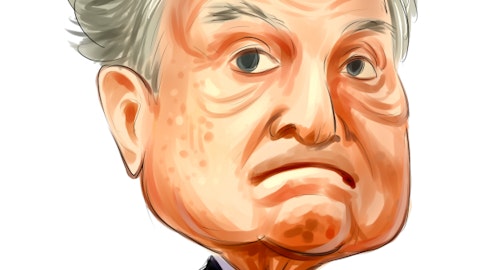Tracking error, the amount by which an ETF’s returns deviate from its benchmark index, is a fact of life and an often ignored fact at that. In some instances, a high tracking error can be a good thing if it means the fund is far outpacing its benchmark. The other side of that coin is that an elevated tracking error is negative if the fund is lagging the benchmark index by a wide margin.
Along those lines, classifying tracking errors as “high” and “low” depends on the ETF’s returns. A fund with a tracking error of 50 basis points might appear to be diverging too much from its benchmark, but if that ETF is up 10 percent, tracking error clearly is not a big issue. If that same ETF only returns three percent or four percent with tracking error of 0.5 percent, then it is fair to say the fund is home to high tracking error.
In a perfect world, all ETFs would have tracking error resembling that of the SPDR S&P 500 (NYSEARCA:SPY). SPY is not perfect, but it is close. Over time, the fund has done an excellent job of tracking the S&P 500 with the only difference being the low 0.0945 percent in fees SPY charges as data from State Street indicate.
However, the world is not perfect and there are plenty of ETFs with high tracking error. Here are a few examples.
SPDR Barclays Capital High Yield Bnd (NYSEARCA:JNK) ETFs tracking high-yield debt are often viewed as fertile ground for elevated tracking error and that scenario is not limited to corporate debt.
One reason tracking error can be high in ETFs such as JNK is corporate bond ETFs, investment grade and junk, usually have high rates of portfolio turnover. There are costs associated with that turnover. With JNK, there are a couple of factors that may be impacting its tracking error. The fund holds slightly more issues than its index and that marginally trims the ETF’s modified adjusted duration compared to to the index.
That probably is not the sole determinant, but this much is clear: JNK will celebrate its fifth birthday next month and in that time the ETF is up just over seven percent. Its index is up more than 10 percent, according to State Street data.
iShares MSCI Brazil Index (NYSEARCA:EWZ) EWZ, the largest ETF tracking Latin America’s largest economy, has been a stellar performer since coming to market in July 2000. No one can argue with that given that EWZ has nearly quadrupled since then. To be precise, EWZ is up 288.2 percent since inception.
The problem is the MSCI Brazil Index is up more than 361 percent over the same time, giving EWZ an annualized performance difference of almost 1.6 percent, according to iShares data.
Investors should note tracking error can arise in emerging markets ETFs due to some funds being home to thinly traded components or liquidity issues in the market the fund tracks. EWZ is an interesting case because the fund is proof positive that as a developing market becomes more accessible to investors, the ETF’s tracking error can diminish. Over the past three years, EWZ’s annualized performance difference is less than two-thirds of a percent.
Market Vectors High Yield Muni. Ind (NYSEARCA:HYD) As was noted with JNK, any high-yield bond ETF can prove susceptible to tracking error. In the case of the Market Vectors High-Yield Municipal Index ETF, one of the primary reasons for the fund’s tracking error is holdings. As in the ETF holds 285 high-yield muni issues, but its index holds 5,204.
HYD’s index is up 14.6 over its life span, but the ETF is up almost 14 percent since inception in February 2009. More recently, HYD’s tracking error has played in investors’ favor, perhaps indicating extracting a small number of bond issues from a massive index can be profitable when executed well. Over the past year, HYD’s net asset value has topped the index by over 170 basis points. Year-to-date, the spread is 200 basis points.
Over narrower time frames, the spread is narrowing. In the past 90 days, HYD’s index has topped the fund’s NAV by less than 15 basis points and over the past month, the ETF and the index all essentially even.
This article was originally written by The ETF Professor, and posted on Benzinga.





